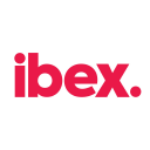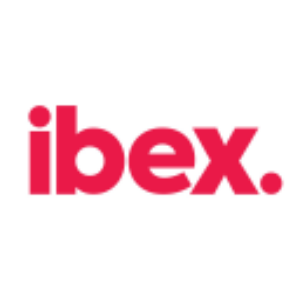Welcome to our dedicated page for Ibex SEC filings (Ticker: IBEX), a comprehensive resource for investors and traders seeking official regulatory documents including 10-K annual reports, 10-Q quarterly earnings, 8-K material events, and insider trading forms.
Looking for the story behind IBEX’s rapid expansion into AI-powered contact centers? Start with the disclosures investors trust most. Our SEC Filings hub untangles every IBEX document—whether you need the IBEX annual report 10-K simplified to gauge client concentration risk or an IBEX quarterly earnings report 10-Q filing to track segment margins.
Finding those details across hundreds of pages is tedious. Stock Titan applies AI that highlights wage inflation in nearshore sites, flags capital spending on the Wave iX platform, and provides instant alerts for IBEX insider trading Form 4 transactions. The result: understanding IBEX SEC documents with AI becomes a five-minute task.
Use the menu to jump straight to what professionals ask for most:
- Real-time Form 4 feed – follow IBEX executive stock transactions Form 4 and get context around each trade.
- 8-K event briefs – see IBEX 8-K material events explained minutes after they hit EDGAR, from new client wins to leadership changes.
- DEF 14A proxy tools – decode IBEX proxy statement executive compensation without spreadsheet gymnastics.
- Earnings pack – one click reveals our IBEX earnings report filing analysis and historical KPIs.
Every filing—10-K, 10-Q, 8-K, S-8, SC 13G, or the next IBEX Form 4 insider transactions real-time—arrives here within seconds of EDGAR publication and is paired with plain-English summaries. Monitor contract renewal clauses, compare headcount by region, or assess AI capital spend—all without sifting through dense legal text. Complex disclosures, made clear.
Ibex Limited (IBEX) reported that its Board of Directors has created a formal Nominating Committee made up entirely of independent directors. Previously, nominating duties were handled by the independent members of the full Board, a structure that the company notes already complied with Nasdaq rules requiring that director nominations be made solely by independent directors.
The new Nominating Committee will identify and evaluate director candidates, recommend nominees each year, and set criteria for board and committee membership, as outlined in its charter on the company’s website. The Board appointed Daniella Ballou-Aares as Chair, along with Karen Batungbacal, Fiona Beck, Patrick McGinnis, and Mingzhe (JJ) Zhuang, each determined to be independent under Nasdaq and SEC standards.
Upon formation, the Committee ratified prior actions of the independent directors and re-nominated the existing slate of director candidates for election at the annual meeting scheduled for December 5, 2025. These steps were taken in response to concerns raised by proxy advisory firms Institutional Shareholder Services and Glass Lewis about the nominating process, and the company believes the changes fully resolve those issues.
IBEX Ltd reported an amended insider transaction. The company’s Chief Executive Officer and Director filed a Form 4/A to record the exercise of a stock option for 45,027 common shares at $19 on 09/16/2025 (transaction code M). The filing shows 0 derivative securities remaining afterward, indicating this option position was fully exercised.
The amendment explains that the acquisition and sale of the shares underlying this option were previously reported on September 17, 2025, and the option exercise itself was inadvertently omitted and is now included. The option was fully vested and exercisable, with an expiration date of 08/07/2030. Ownership is listed as Direct.
IBEX Ltd reported an insider equity award. The company’s Chief Technology Officer filed a Form 4 for a grant of 15,000 Restricted Stock Units (RSUs) on November 11, 2025. Each RSU converts into one common share. The filing lists the acquisition at $0 and shows 15,000 shares beneficially owned directly after the transaction.
The RSUs vest over four years: 3,750 units on November 11, 2026, with an additional 3,750 units vesting annually thereafter, subject to continued service.
IBEX Limited reported strong quarterly results for the period ended September 30, 2025. Revenue reached $151.2 million, up 16.5% year over year, as growth from Retail & E‑commerce, HealthTech, Travel, and Other verticals offset declines in Telecommunications. Net income rose to $12.0 million, with diluted EPS of $0.82.
Profitability improved with operating margin at 9.1% and adjusted EBITDA of $19.5 million (12.9% margin), reflecting mix shift to higher‑margin offshore delivery and disciplined SG&A. Cash from operating activities was $15.7 million, driving free cash flow of $8.0 million. Liquidity remained solid with cash of $22.7 million, total debt of $1.6 million, and net cash of $21.1 million, plus $67.4 million available under HSBC credit facilities.
The company repurchased 91,658 shares for $2.7 million and had $10.6 million remaining under its 2025 buyback authorization. Shares outstanding were 13,467,175 as of October 31, 2025.
IBEX Limited called its 2025 annual meeting for December 5, 2025 via virtual webcast to vote on five proposals, including electing eight directors, authorizing the Board to fill vacancies, approving an Amended & Restated 2020 Long‑Term Incentive Plan (A&R 2020 LTIP), and appointing Deloitte & Touche LLP as auditor with Audit Committee authority to set fees. The record date is October 10, 2025.
The A&R 2020 LTIP would add 650,000 Common Shares, bringing the plan’s aggregate share reserve to 2,637,326.13 shares, reset the term through December 5, 2035, set a non‑employee director annual compensation limit of $450,000 (or $900,000 in the first year), prohibit dividends on unvested awards, add double‑trigger acceleration following a change in control, and prohibit option/SAR repricing without shareholder approval.
IBEX notes it is no longer a Nasdaq “controlled company” (effective November 19, 2024) and reports five independent directors out of eight. Committee activity, director attendance, and updated non‑employee director compensation (including RSU grants to new directors) are detailed. The Board recommends voting “FOR” all proposals.
IBEX Ltd filed a Form 3 under Section 16(a) for its Chief Technology Officer. The filing states that no securities are beneficially owned by the reporting person. The stated event date is 10/01/2025. The form was executed by Lisa Lenstrohm as attorney-in-fact, with an attached Exhibit 24 power of attorney.
The filer submitted a Form 144 for IBEX Ltd showing a proposed sale of 1,275 common shares to be executed via NASDAQ with an aggregate market value of $50,466.87 and an approximate sale date of 10/02/2025. The shares were acquired on 09/30/2025 by the vesting of a performance grant totaling 4,196 shares. The filing records prior sales by the same person of 438 shares for $12,732.51 on 08/26/2025 and 2,295 shares for $93,475.69 on 09/19/2025. The notice identifies the broker as Global Shares Financial Services Inc. and reports total shares outstanding of 13,315,077. The signer certifies no undisclosed material adverse information.
IBEX Ltd filed a Form 144 reporting a proposed sale of 6,711 common shares with an aggregate market value of $265,632.78, expected to occur on 10/02/2025 on NASDAQ. The shares were acquired by vesting of a performance grant on 09/30/2025 totaling 14,524 shares. The filing also discloses two recent sales by the same account: 1,634 shares sold on 08/26/2025 for $47,544.08 and 45,027 shares sold on 09/16/2025 for $1,751,100.03. The filer attests there is no undisclosed material adverse information.


